Pandan Wajik
Soft, chewy, and fragrant with pandan, Pandan Wajik is a classic Indonesian sticky rice treat. Naturally green from pandan extract and rich with coconut milk, it’s a simple yet elegant dessert that’s perfect for any gathering.
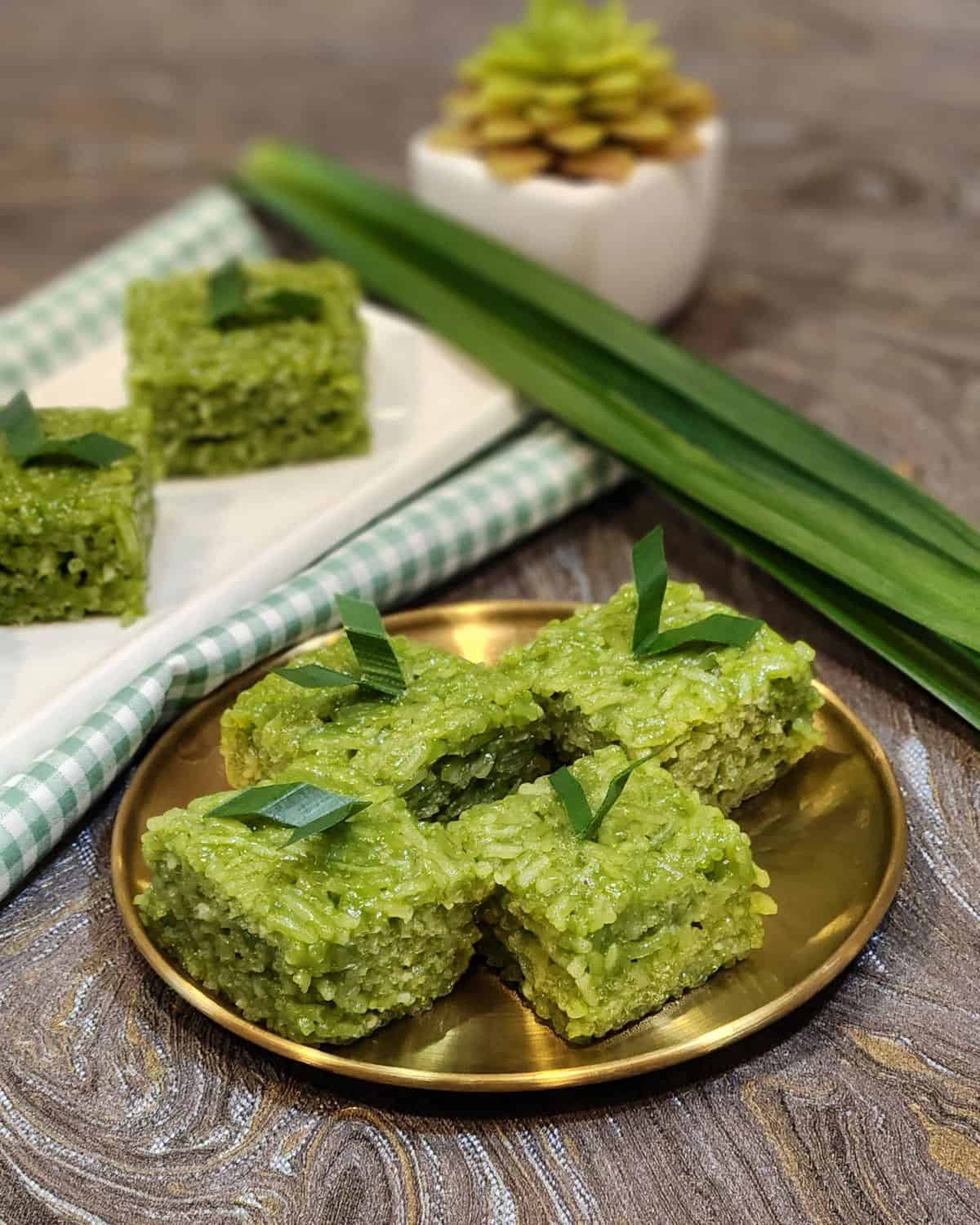
If you’ve ever tried the caramel flavor of Palm Sugar Wajik (the classic wajik with palm sugar or coconut sugar), you’ll love this one: Pandan Wajik. Made with glutinous rice, creamy coconut milk, and fresh pandan extract, this version substitutes the bold palm sugar flavor for a more fragrant nutty note.
Like other Southeast Asian sticky rice treats such as mango sticky rice, ketan serundeng, or lemper, or the comforting pulut hitam, Pandan Wajik is glutinous rice at its finest—soft, chewy, fragrant, and rich with coconut milk.
Why You Will Love This Recipe
Recipe Ingredients
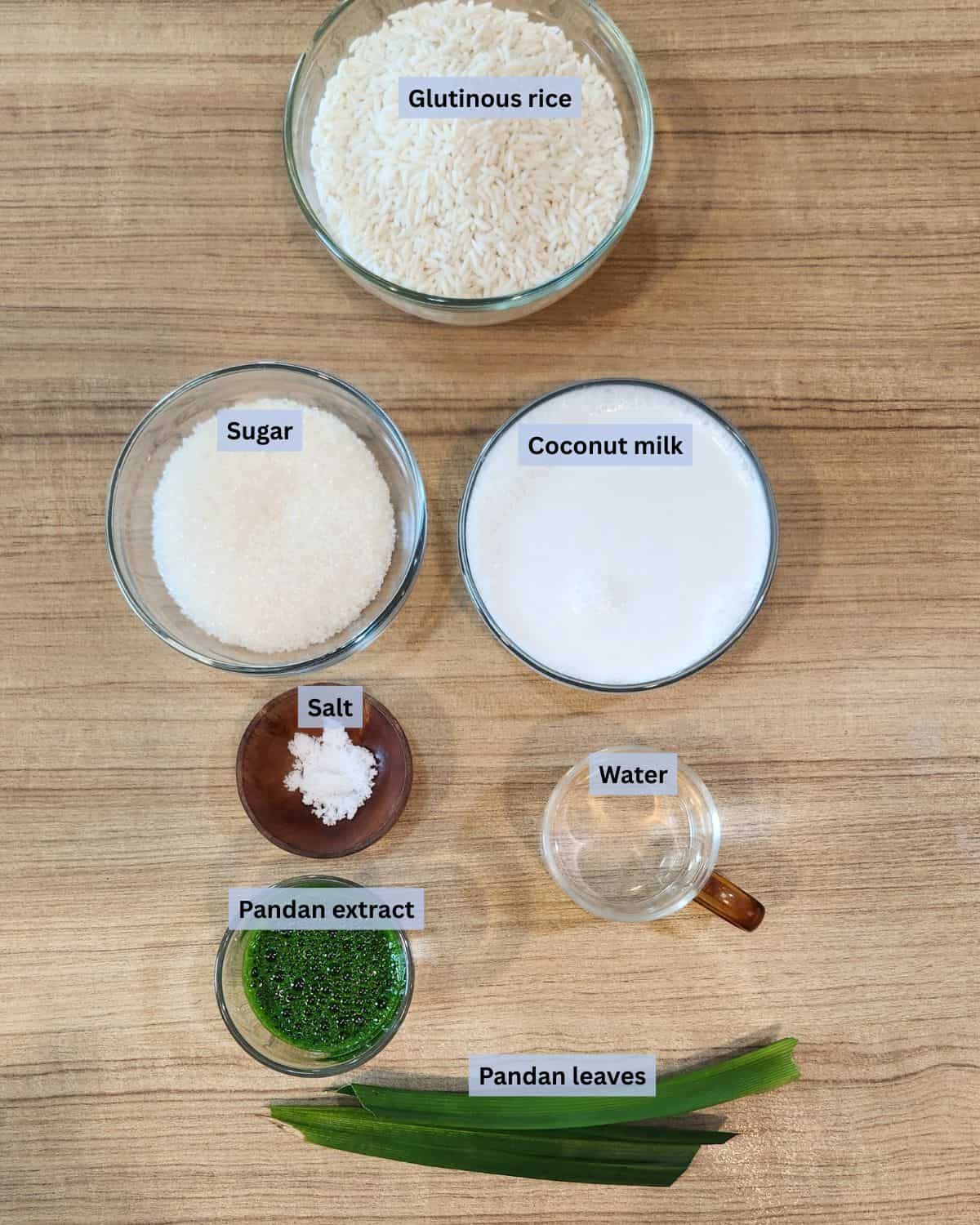
Be sure to check out the full recipe and ingredient list below
How to Make Pandan Wajik
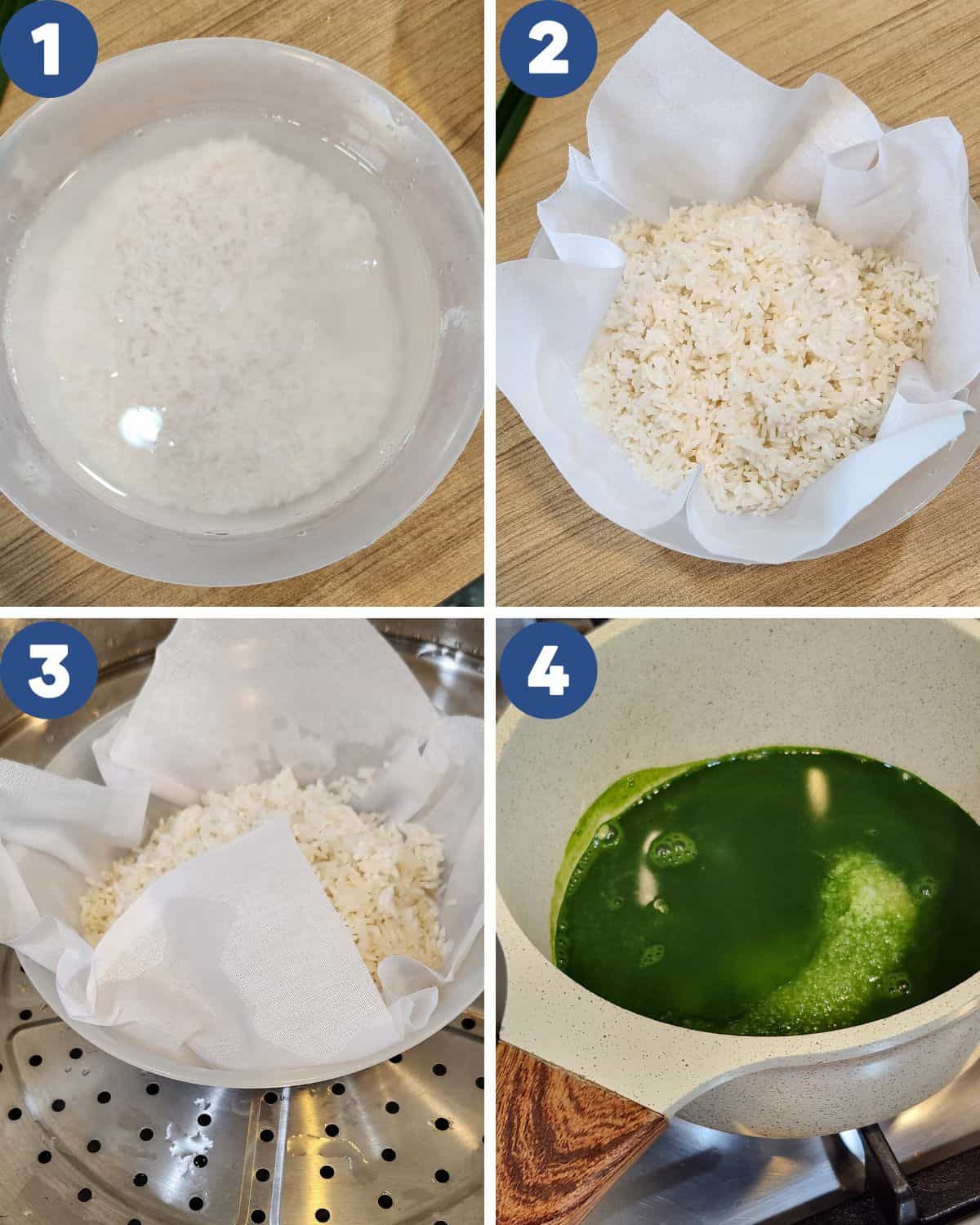
STEP 1. Rinse the glutinous rice 2–3 times with clean water until the water runs mostly clear. Drain, then soak it in fresh water for 2 hours (Image 1). Once soaked, drain the rice again and transfer it into a bowl lined with a clean cloth. Steam for 30 minutes (Images 2, 3).
While the rice is steaming, prepare the pandan mixture. In a saucepan, combine sugar, salt, and pandan extract (Image 4).
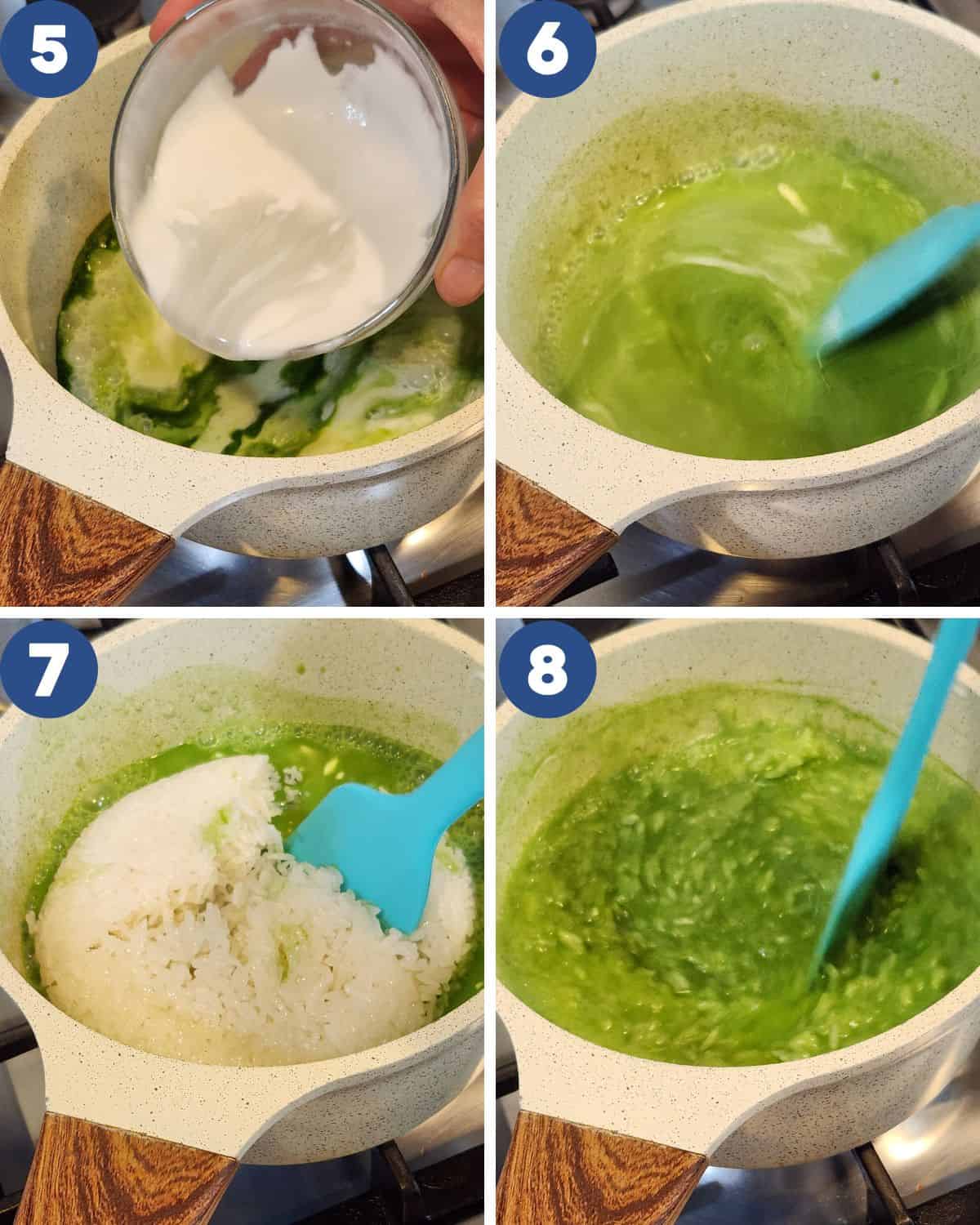
STEP 2. Pour in the coconut milk and place the saucepan over low to medium heat. Stir continuously until the sugar fully dissolves (Images 5, 6). Once the sticky rice is done steaming, add it into the saucepan (Image 7). Stir well using a spatula to coat the rice evenly (Image 8).
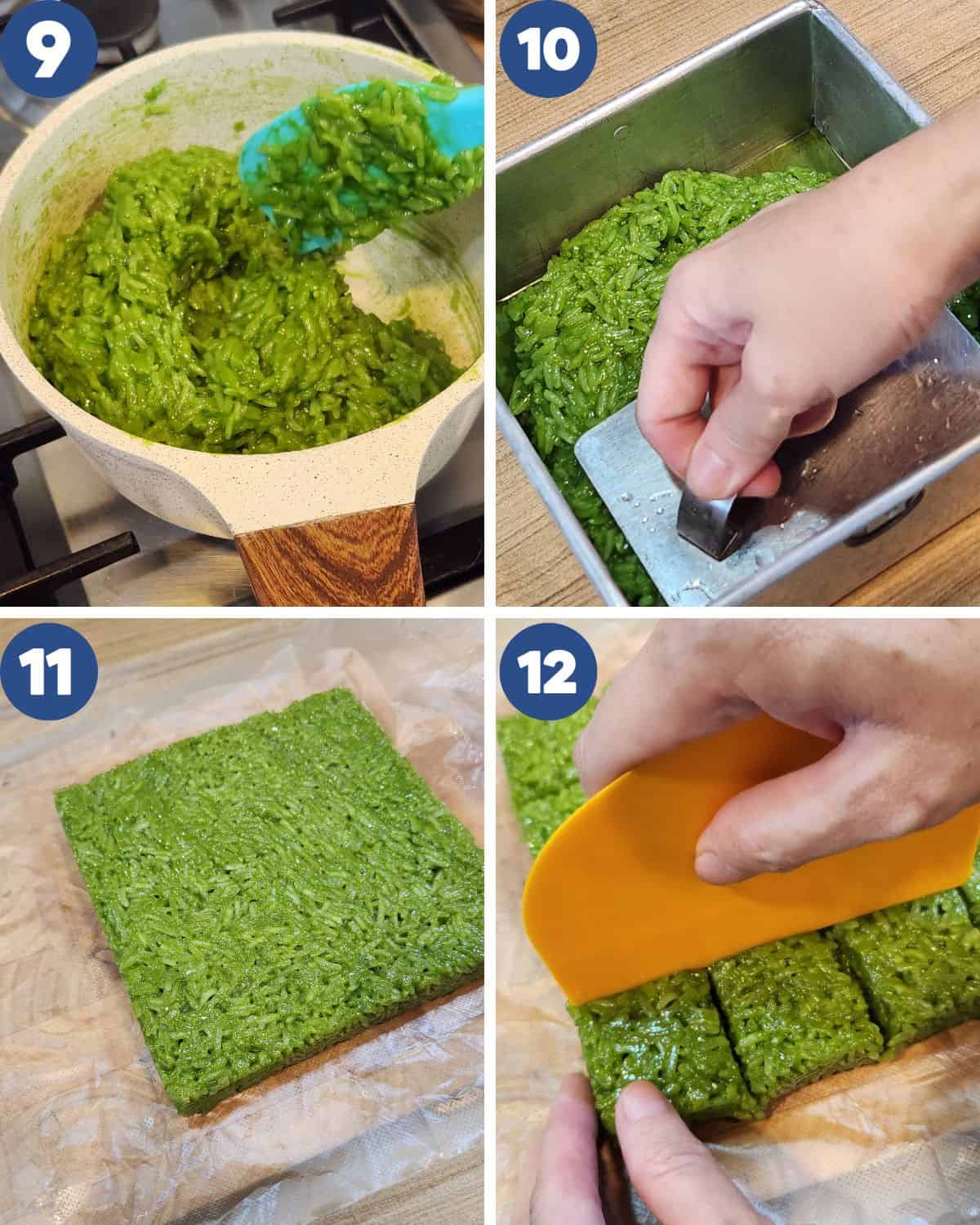
STEP 3. Continue cooking and stirring until the sticky rice absorbs all the liquid and becomes thick and glossy (Image 9).
Transfer the mixture to a greased baking pan (Image 10). Press it down firmly and evenly. Let it cool completely, then remove from the pan (Image 11). Slice using a greased plastic knife to your desired size (Image 12). Enjoy your fragrant and chewy Pandan Wajik!
Pro Tips
- Use good-quality glutinous rice – Not all sticky rice is created equal. Go for Thai or Indonesian glutinous rice for the best chewy texture. Old rice can turn out dry or unevenly cooked.
- Don’t skip the soaking – Soaking the rice helps it cook more evenly and gives it that signature soft, sticky bite. Two hours is ideal, but you can soak longer if needed (just don’t go overnight unless refrigerated).
- Steam with a cloth liner – Lining the bowl or steamer with a clean cloth keeps the rice from getting soggy and helps it steam evenly.
- Stir gently but thoroughly – When mixing the cooked rice with the pandan-coconut mixture, fold gently to avoid mashing the grains, but make sure everything is well-coated.
- Low and slow is key – Keep the heat low when cooking the pandan mixture and combining it with the rice. Rushing it may cause the coconut milk to curdle or burn.
- Press firmly for clean slices – Use a spatula or the back of a spoon to press the mixture tightly into the pan. This helps the wajik hold its shape when cut.
- Grease your knife – Sticky rice means sticky slicing! Use a greased plastic or non-stick knife to cut neat pieces without tearing.
- Let it cool completely – Don’t rush the cooling time. Pandan Wajik firms up as it cools and becomes easier to slice and serve.
How to Serve
Pandan Wajik is delicious on its own, but even better when paired with the right drinks and snack. Enjoy it with a warm cup of wedang jahe, or sip on lemongrass tea or rose milk tea.
You can serve green-hued snacks like kue apem, pandan serabi, or kue lumpang. This chewy wajik is perfect for your small gathering.
FAQs about Pandan Wajik
Pandan Wajik is made from glutinous rice, coconut milk, sugar, and fresh pandan extract or juice. It’s a chewy Indonesian sticky rice dessert with a nutty aroma and creamy texture.
Not quite. While both are traditional Indonesian sticky rice desserts, Wajik Gula Merah uses palm sugar for a rich caramel flavor, while Pandan Wajik uses pandan for a lighter, more fragrant profile and natural green color.
Yes! You can substitute fresh pandan juice with pandan paste or pandan extract. Just adjust the amount to avoid overpowering the flavor—paste is more concentrated, and a little goes a long way.
Yes! Since it’s made with glutinous rice (which is gluten-free despite the name), coconut milk, and sugar, it’s naturally gluten- and dairy-free.
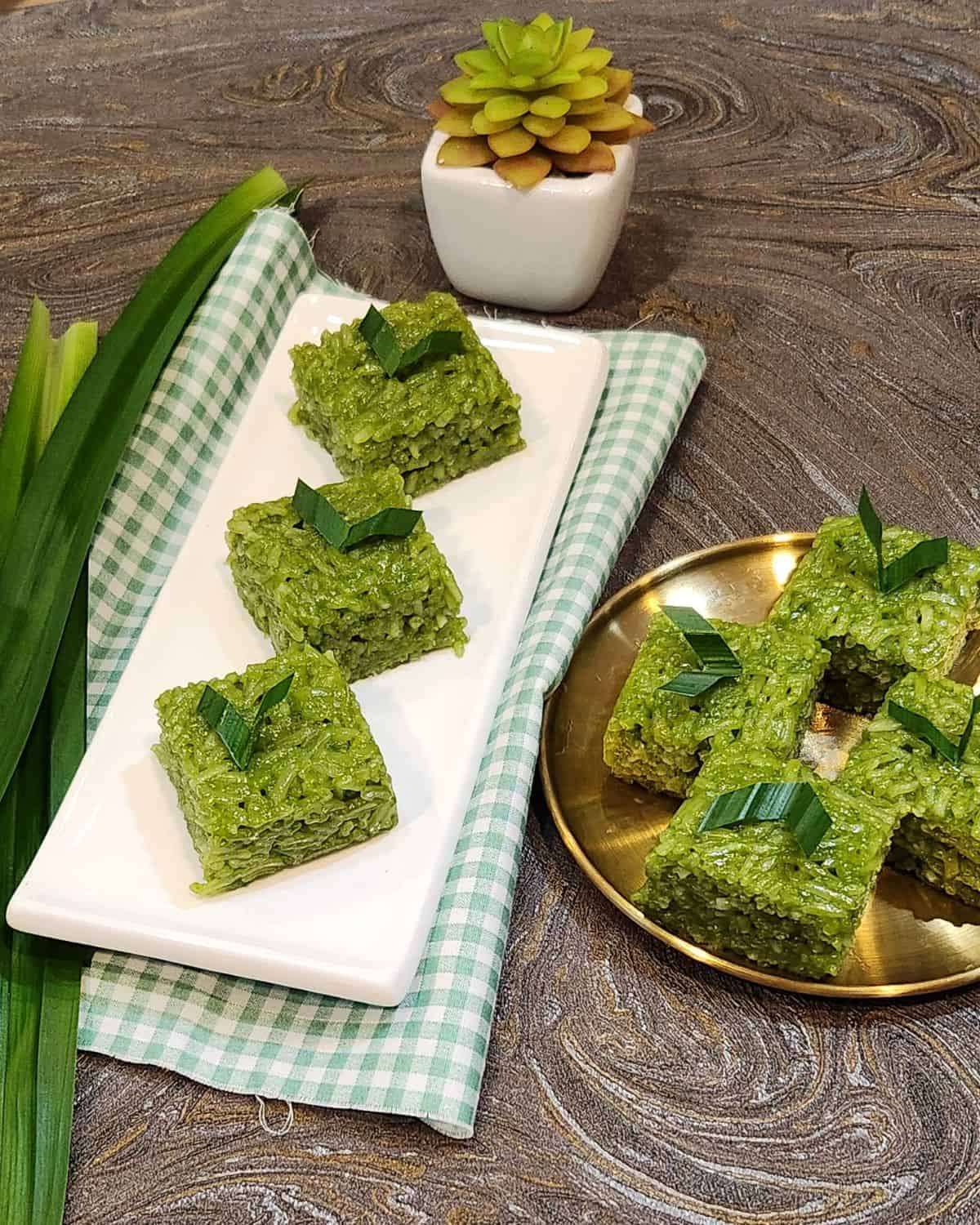
Storage
Pandan Wajik can last up to 2 days at room temperature if kept in an airtight container. For longer storage, refrigerate it for up to a week and re-steam briefly before serving to restore its soft texture.
More Indonesian Snack Recipes
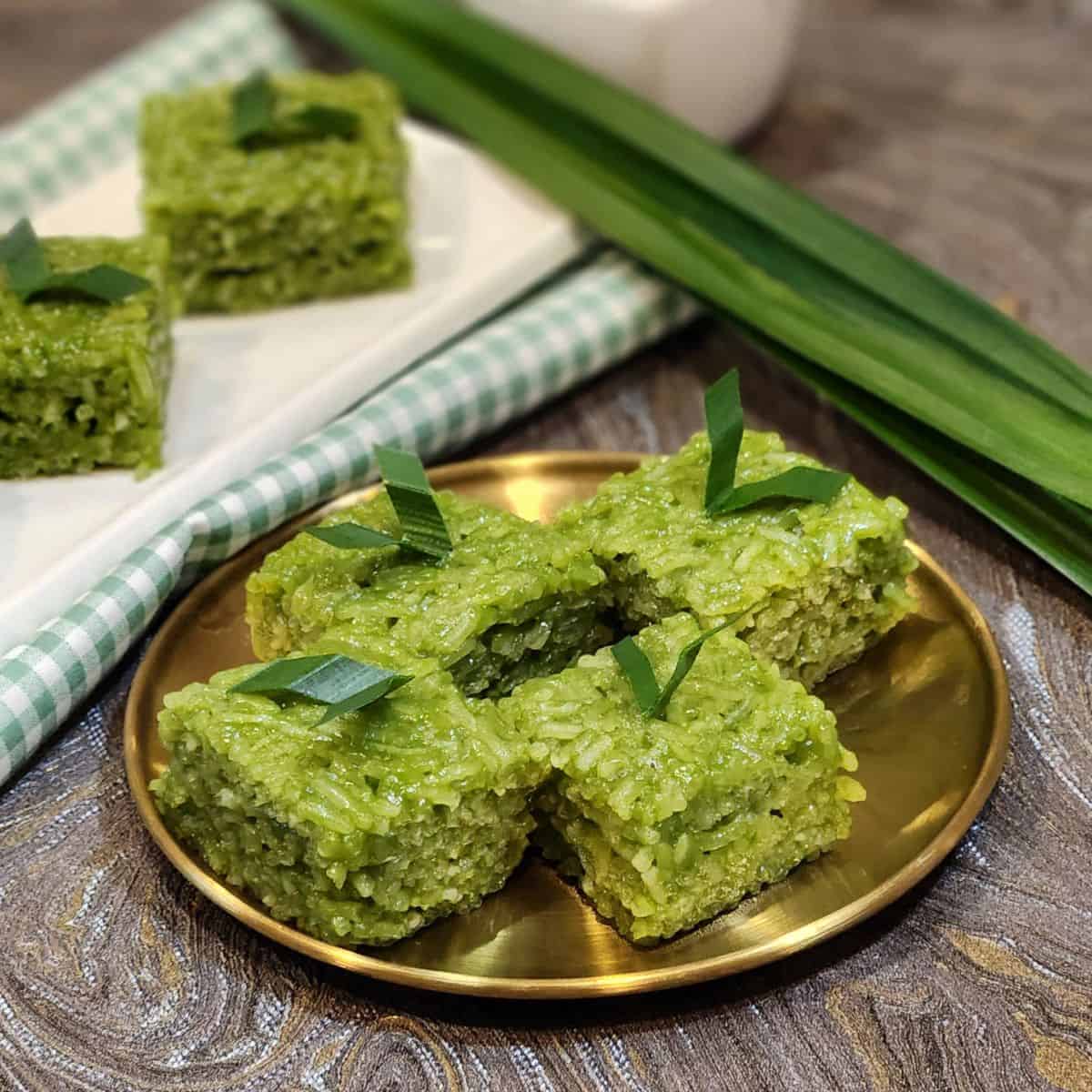
Pandan Wajik
Equipment
- 1 baking pan 16×16 cm
Ingredients
- 250 gr glutinous rice
- 110 gr sugar
- 1/4 tsp salt
- 250 ml coconut milk
- 40 ml pandan extract
Instructions
- Rinse the glutinous rice 2–3 times with clean water until the water runs mostly clear. Drain, then soak it in fresh water for 2 hours). Once soaked, drain the rice again and transfer it into a bowl lined with a clean cloth. Steam for 30 minutes. While the rice is steaming, prepare the pandan mixture. In a saucepan, combine sugar, salt, and pandan extract.
- Pour in the coconut milk and place the saucepan over low to medium heat. Stir continuously until the sugar fully dissolves. Once the sticky rice is done steaming, add it into the saucepan. Stir well using a spatula to coat the rice evenly.
- Continue cooking and stirring until the sticky rice absorbs all the liquid and becomes thick and glossy.Transfer the mixture to a greased baking pan. Press it down firmly and evenly. Let it cool completely, then remove from the pan. Slice using a greased plastic knife to your desired size. Enjoy your fragrant and chewy Pandan Wajik!
Video
Notes
- Use good-quality glutinous rice – Not all sticky rice is created equal. Go for Thai or Indonesian glutinous rice for the best chewy texture. Old rice can turn out dry or unevenly cooked.
- Don’t skip the soaking – Soaking the rice helps it cook more evenly and gives it that signature soft, sticky bite. Two hours is ideal, but you can soak longer if needed (just don’t go overnight unless refrigerated).
- Steam with a cloth liner – Lining the bowl or steamer with a clean cloth keeps the rice from getting soggy and helps it steam evenly.
- Stir gently but thoroughly – When mixing the cooked rice with the pandan-coconut mixture, fold gently to avoid mashing the grains, but make sure everything is well-coated.
- Low and slow is key – Keep the heat low when cooking the pandan mixture and combining it with the rice. Rushing it may cause the coconut milk to curdle or burn.
- Press firmly for clean slices – Use a spatula or the back of a spoon to press the mixture tightly into the pan. This helps the wajik hold its shape when cut.
- Grease your knife – Sticky rice means sticky slicing! Use a greased plastic or non-stick knife to cut neat pieces without tearing.
- Let it cool completely – Don’t rush the cooling time. Pandan Wajik firms up as it cools and becomes easier to slice and serve.

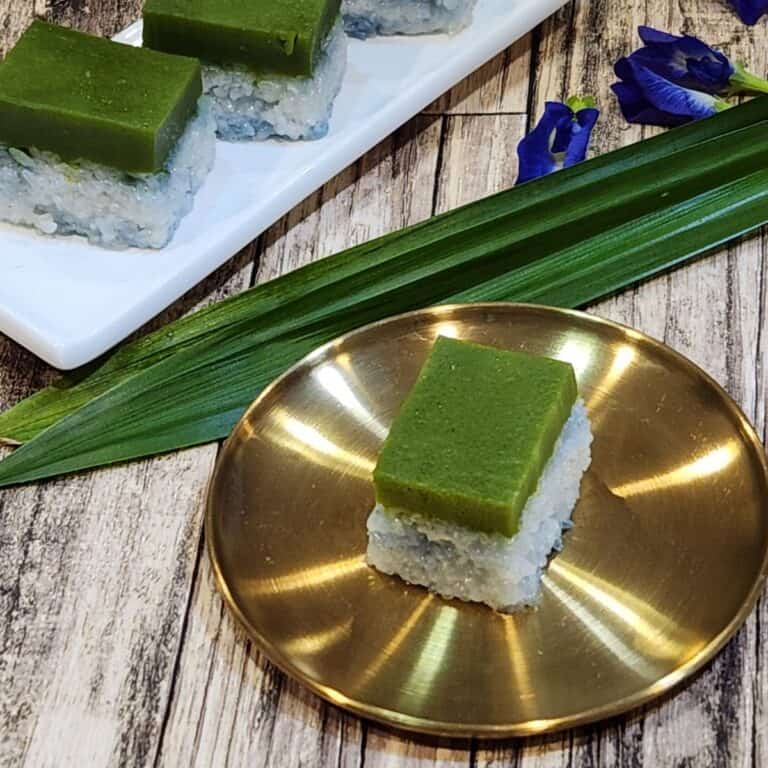




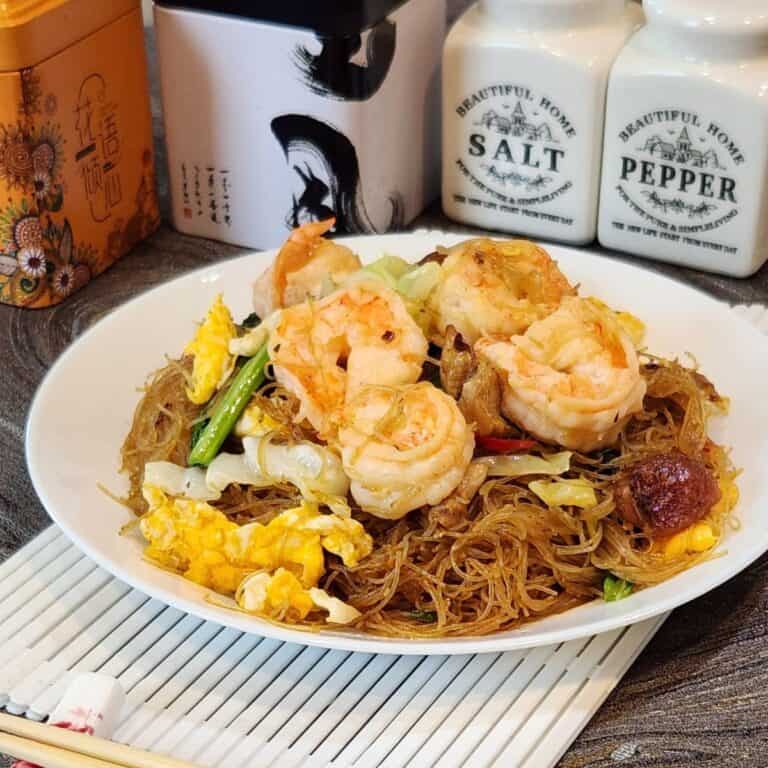
Other than palm sugar wajik, this is my second favorite wajik! It is super easy to make, chewy, and fragrant!